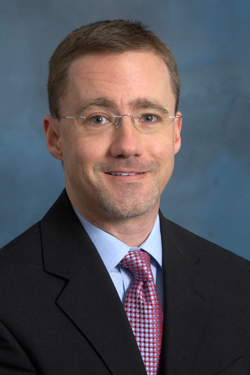Study finds state's emergency departments are not being overwhelmed by only the uninsured
April 5, 2011

Dr. Lee Pearson, SCPHI director, says new
report underscores the burden placed
on healthcare provided by hospital
emergency departments.
Emergency department (ED) visits to South Carolina hospitals are growing faster than the state's population, significantly outpacing the national average and continuing to rise, according to a new report by the South Carolina Public Health Institute (SCPHI).
The report also contradicts a popular misconception that the uninsured are overwhelming South Carolina's emergency departments.
Citing statistics from the U.S. Centers for Disease Control and Prevention and the S.C. Budget and Control Board, the report found that the number of emergency department visits nationally rose by about one-third (32 percent) between 1996 and 2006, representing an average increase of 2.9 million visits per year.
South Carolina experienced a 50 percent increase during the same period. The visit rate in the Palmetto State was 45 percent in 2006 and 45.4 percent in 2008.
SCPHI officials said the report was developed to address concerns about emergency rooms being used as safety net primary care providers and to understand the patient population that frequents emergency rooms and the reasons for their visits.
The report examines ED activity before job losses and declining household incomes resulting from the current recession, which increased the number of South Carolinians without private health insurance and increased the number of Medicaid enrollees.
The report provides a comprehensive baseline picture of what ED use looked like in "normal" times. Now, as the state's Medicaid program moves to reduce payment to physicians and hospitals, decision makers will have a starting point for comparison of how these changes affect safety net utilization.
"This report underscores the burden that emergency rooms across the state are experiencing and the fragile health conditions of people who are repeat users of emergency department services. Behavioral health and unmanaged chronic illnesses have a major impact on South Carolina EDs in terms of visits and costs," said Dr. Lee Pearson, SCPHI director.
Frequent users have been defined as "people of modest means and poor health who go in and out of emergency rooms day after day, their fundamental health issues rarely resolved, at a tremendous and ever-growing cost to hospitals, municipalities and taxpayers."
The SCPHI report defines frequent users as those who made five or more visits to the ED in one year. Frequent users in South Carolina comprise 21 percent of all visits to EDs, 10 percent of all costs incurred in EDs and 5 percent of patients in the ED.
EDs are not designed or staffed to meet the needs of these patients who often have nowhere else to receive care. The emerging medical home model is one recognized approach to managing these patients. Hospitals across the state have approached inappropriate utilization and frequent users in different ways with varying degrees of success.
Lynn Bailey, Columbia health care economist and SCPHI Advisory Board member, contributed to the report. She summarized frequent users as follows: "They are one-fifth of total ED visits and account for 10 percent of costs, yet they are only 5 percent of the patients. Those few patients are using the ED a lot. But overall, most of us use the ED responsibly."
The report concluded that frequent use of the ED is a symptom of broader systemic problems with the health care system: "High ED utilization may not be an 'abuse' of the ED by most patients, but rather an indicator that the health care needs of these patients have not been met in their usual primary care setting."
The report noted particularly that there are "substantial numbers of Americans, particularly those with behavioral illness and substance abuse disorders, with unmet health needs who use the ED because of its convenience, accessibility, and affordability."
A review of statewide data shows that this clearly is a problem for South Carolina EDs.
Visit http://scphi.org to learn more about the report.
About the S.C. Public Health Institute: SCPHI works to bring together governmental and community-based stakeholders around issues important to the health and well-being of South Carolinians and to provide evidence-based information to inform public health policy.



_01.jpg)